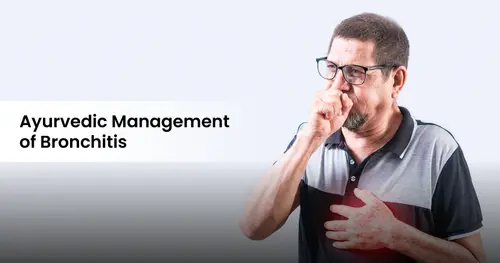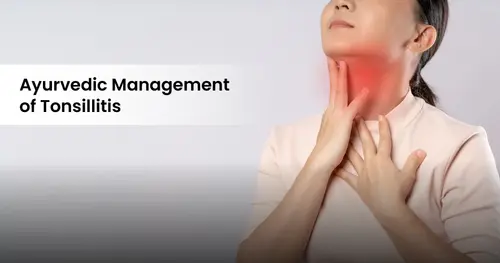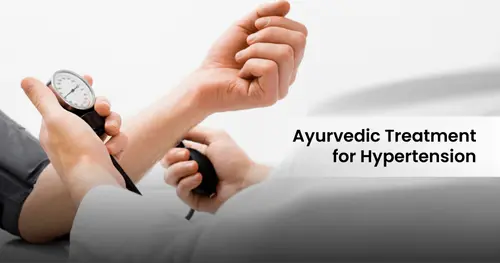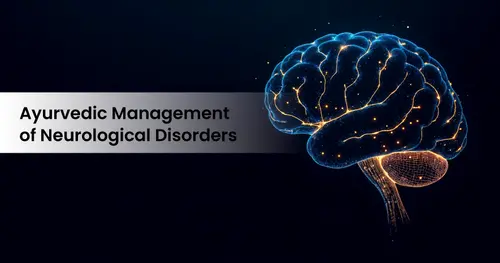
In Ayurveda, the heart—referred to as Hridaya—is not merely a physical organ but the central seat of Chetana (consciousness), Mana (mind), Ojas (vital energy), and Rasa Dhatu (plasma and nutritive fluids). It is regarded as one of the trimarma—vital organs—whose functional integrity is crucial for sustaining life. The etymological root of the word “Hridaya” encapsulates its dual physiological action: “Hru” meaning to draw or receive, and “Da” meaning to donate or circulate, aptly describing the heart’s role in receiving and propelling Rasa and Rakta throughout the body.
In Ayurvedic thought, heart disease or Hridroga is viewed as a manifestation of systemic doshic imbalance, primarily involving one or more of the three fundamental bio-energies—Vata, Pitta, and Kapha. These imbalances disrupt the functioning of Srotas (channels), impair Agni (digestive fire), and culminate in the accumulation of Ama (toxic metabolic by-products), which gradually compromise the structural and functional capacity of the heart.
The causative factors of heart disease are diverse and multifactorial. Improper dietary habits, such as the excessive consumption of pungent, salty, heavy, and incompatible foods, can
severely vitiate the doshas and lead to poor digestion and ama formation. Eating before the previous meal is digested (Adhyashana), following irregular meal schedules, or overconsumption of rich, oily, and processed foods can overload the metabolic system and weaken Rasa and Rakta Dhatus—the primary circulatory fluids connected to heart function.
Similarly, lifestyle choices play a pivotal role. Prolonged physical inactivity, sedentary routines, suppression of natural bodily urges (vegadharana), or extreme physical exertion (ativyayama) create imbalances that compromise cardiac function. Inappropriate or untimely administration of therapies such as Panchakarma without proper indication may further aggravate doshas and predispose the individual to heart conditions.
Psychological stressors are another significant cause. Emotions like fear, grief, anger, anxiety, and mental overexertion disturb Vata and Pitta, leading to derangement in the neuro-hormonal axis. These changes have a physiological correlate in modern medicine—stress triggers a cascade of neuroendocrine events, raising catecholamine levels, blood pressure, and lipid profiles, thus facilitating atherosclerosis and ischemia.
Clinically, Hridroga manifests with a constellation of symptoms that range from chest discomfort, shortness of breath (shwasa), palpitations, syncope (murccha), and pain in the cardiac region (ruja), to systemic signs such as fatigue, anorexia, fever (jwara), nausea, excessive thirst, and altered taste perception. In more advanced cases, discoloration of the skin (vaivarnya), swelling of extremities, and psychological confusion (pramoha) are observed, correlating with heart failure or decompensated cardiac states.
The Ayurvedic management of heart disease focuses on restoring doshic balance, enhancing Agni, clearing Ama, and rejuvenating the cardiovascular system. The initial and most critical step involves Nidana Parivarjana—eliminating causative factors. This includes the adoption of a heart-supportive diet rich in fruits, vegetables, whole grains, and fiber, while avoiding refined sugar, trans fats, excessive salt, and stimulants. Emphasis is placed on Hita Ahara—food that is light to digest, unctuous in quality, and prepared fresh.
Lifestyle interventions are central to Ayurveda’s preventive cardiology. A routine that incorporates adequate sleep, regular bowel movements, physical activity, and stress management is essential. Yogic practices such as Bhujangasana (cobra pose), Tadasana (mountain pose), and Shavasana (relaxation pose) have shown positive effects on blood pressure regulation and cardiac efficiency. Breathing techniques like Anulom Vilom and Nadi Shodhana help calm the autonomic nervous system and reduce mental stress.
For individuals with ama accumulation or significant doshic aggravation, Samshodhana Chikitsa or purificatory therapy is advised. Procedures such as Vamana (therapeutic emesis), Virechana (therapeutic purgation), and Basti (medicated enema) are employed based on individual dosha dominance. A specialized treatment, Hridaya Basti, involves pooling of warm medicated oil over the heart region, which is believed to nourish and strengthen cardiac tissues and alleviate vata-induced spasms and pain.

Once purification is achieved, Shamana Chikitsa or palliative treatment is undertaken using formulations that pacify aggravated doshas and restore homeostasis. A light and digestible diet (langhana), along with deepana (appetite-enhancing) and pachana (digestive) herbs, aids in eliminating residual ama. Rejuvenative therapy (rasayana) is then administered to restore the integrity of Ojas—the subtle essence believed to govern immunity and vitality—and enhance the resilience of cardiac tissues.
A rich pharmacopeia of herbs and formulations is employed in the Ayurvedic treatment of heart disease. Terminalia arjuna, revered for its cardiotonic properties, strengthens the myocardium, improves contractility, and stabilizes blood pressure. Commiphora mukul (Guggulu) exhibits lipid-lowering and anti-inflammatory effects, while Withania somnifera (Ashwagandha) helps in regulating cortisol and reducing sympathetic overactivity. Bacopa monnieri (Brahmi), Allium sativum (garlic), and Punarnava (Boerhavia diffusa) are other frequently used botanicals that support cardiac function, manage fluid retention, and soothe the nervous system.
In addition to single herbs, Ayurvedic formulations like Dashamoola Punarnavadi Kashayam, Thryantyadi Kashayam, Partharishtam, and Dasamoolarishtam are indicated based on the patient's clinical profile. These classical preparations work synergistically to reduce inflammation, detoxify tissues, and restore vascular health.
The Ayurvedic framework for heart health does not merely treat disease but emphasizes proactive prevention. It integrates mindful living, dietary discipline, seasonal and daily routines (ritucharya and dinacharya), and emotional equilibrium. This holistic philosophy, rooted in thousands of years of clinical observation, continues to offer valuable insights into managing heart disease in the contemporary world.
While Ayurveda provides a comprehensive blueprint for cardiac care, it is essential to undergo treatment under the guidance of a qualified Ayurvedic practitioner. Personalized diagnosis and tailored interventions ensure safety and optimize outcomes, especially in chronic or advanced cardiac conditions. As research continues to explore the integration of Ayurvedic principles with modern cardiology, a future of more integrative, patient-centric heart care is well within reach.
FAQs
1. What is Hridaya in Ayurveda?
In Ayurveda, Hridaya (heart) is more than a pumping organ—it is the seat of consciousness (Chetana), mind (Mana), vitality (Ojas), and nutritive fluids (Rasa Dhatu). It is considered one of the three marma or vital organs essential for sustaining life.
2. What are the common causes of Hridroga according to Ayurveda?
- Improper diet (too heavy, oily, salty, pungent, or incompatible foods)
- Eating before the previous meal is digested (Adhyashana)
- Sedentary lifestyle or excessive physical strain
- Suppression of natural urges (vegadharana)
- Psychological stress, fear, grief, or anger
- Improper administration of therapies like Panchakarma
3. What are the symptoms of heart disease in Ayurveda?
- Chest discomfort or pain (ruja)
- Shortness of breath (shwasa)
- Palpitations
- Fainting (murccha)
- Fatigue, fever (jwara), nausea
- Swelling in extremities
- Discoloration of skin (vaivarnya)
- Mental confusion (pramoha)
4. Can Ayurveda prevent heart disease?
Yes. Ayurveda emphasizes prevention through balanced diet (hita ahara), healthy lifestyle (dinacharya), seasonal routines (ritucharya), regular physical activity, stress management, and emotional stability.
5. How does Ayurveda treat heart disease?
Treatment includes:
- Nidana Parivarjana – Eliminating causes
- Samshodhana Chikitsa – Detoxifying therapies like Vamana, Virechana, Basti, and Hridaya Basti
- Shamana Chikitsa – Palliative measures with herbs and diet adjustments
- Rasayana Chikitsa – Rejuvenation to strengthen heart tissues and Ojas
6. Are Ayurvedic heart treatments safe with modern medicine?
In many cases, Ayurveda can complement modern treatments, but it should always be supervised by a qualified Ayurvedic practitioner in consultation with your cardiologist to avoid drug-herb interactions.
7. Can Panchakarma help in heart conditions?
Yes, specific Panchakarma procedures like Hridaya Basti, Virechana, and Basti can help in detoxification, improving circulation, and calming aggravated doshas. However, these should be done only after proper diagnosis.

September 25, 2025

September 22, 2025

September 15, 2025

September 11, 2025

August 22, 2025

August 13, 2025

August 08, 2025

August 06, 2025

July 28, 2025

July 21, 2025

July 17, 2025